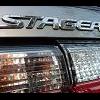Timing Belt+which Timing Light
Announcements
-
Similar Content
-
Latest Posts
-
By Murray_Calavera · Posted
Yeah sounds like the swirl pot isn't being fed from the return line, would be made even worse by the high flow pump. -
This is the R32 one and the inside of the tank should look like this. which has an internal swirl pot, that the return line must empty into. (Interestingly, because the GTR tank is plastic it misses out on the swirl pot.) That is a potential cause for an aftermarket pump hanger to mess things up. Maybe the return is cut short and squirting over the side.
-
By funkymonkey · Posted
Noice. Congrats on the big day too! don’t forget to never eat in the Skyline 🤣 -
By Dose Pipe Sutututu · Posted
Overnight parts from Amazon, let's go. Replaced nearly every o-rings, minus 2x from the pumps. Seems the kit is short? Then again when I replaced the main pump a few years back it did come with new seals so we are good. Yiewwww, ready for legal stimulants. -
By Murray_Calavera · Posted
I'm only really familiar with the R33 setup, the factory filter is very much an encourage fuel pick up thingo. The factory pump sits about half way down into the tank and the sock runs down into the bottom of the tank. Mounting an aftermarket pump in the factory location with the typical tiny Walbro filter, I had huge fuel surge issues once the fuel level dropped below 50%.
-






Recommended Posts
Create an account or sign in to comment
You need to be a member in order to leave a comment
Create an account
Sign up for a new account in our community. It's easy!
Register a new accountSign in
Already have an account? Sign in here.
Sign In Now